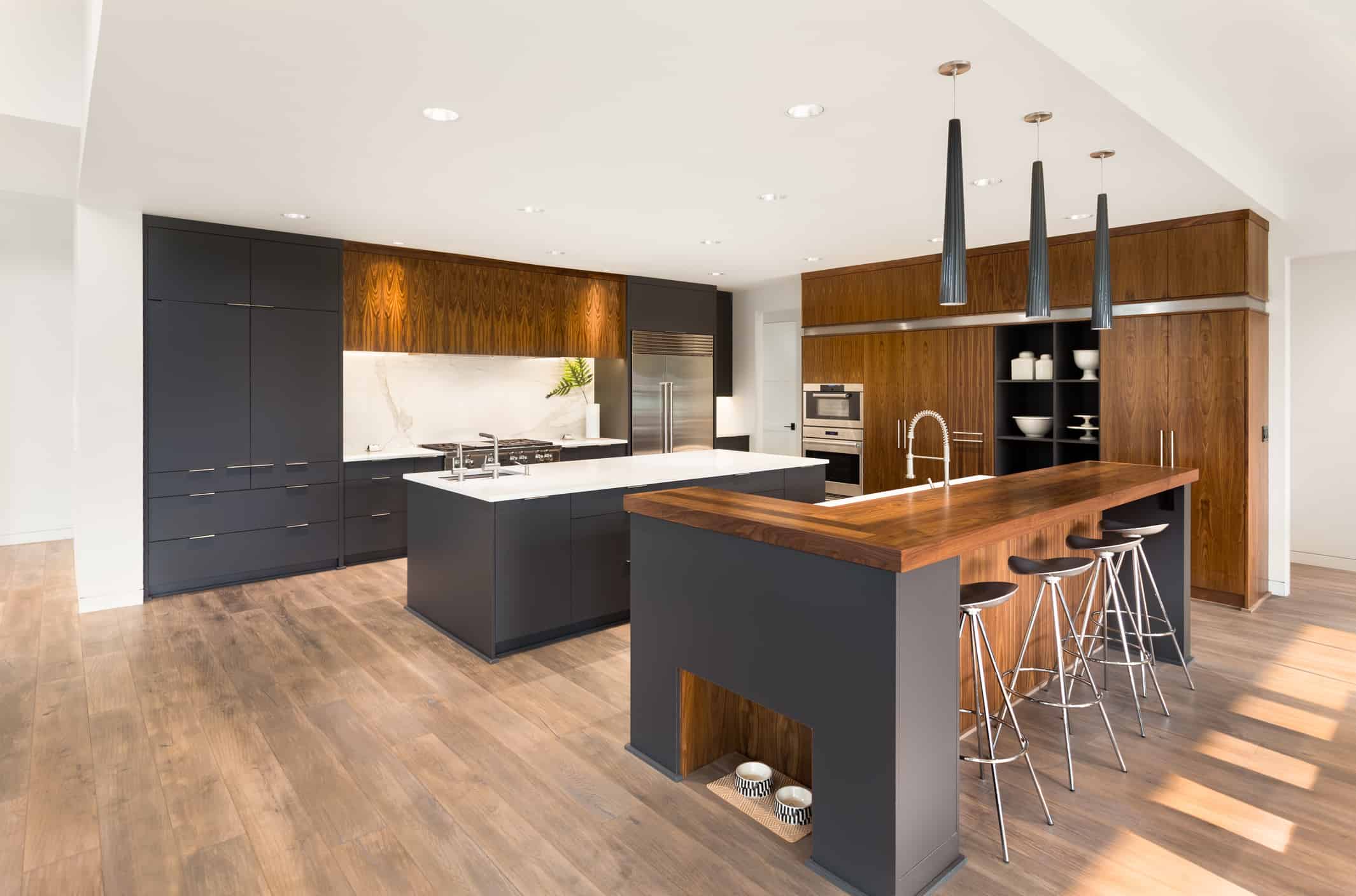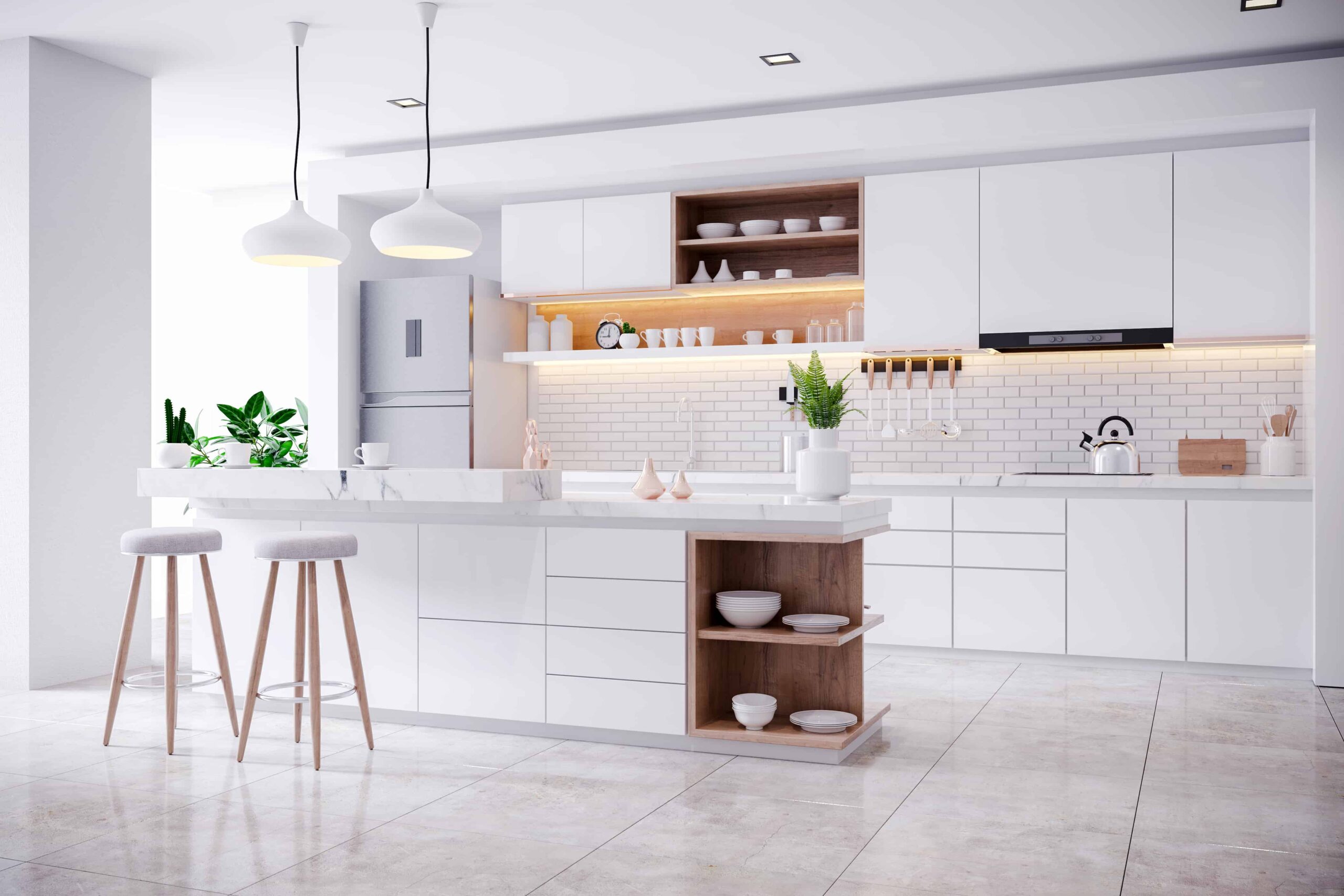The kitchen is often called the heartbeat of the home. From cooking, to dining with the family to just hanging out, it’s a space where you’ll inevitably spend a lot of time. As such, it should have a decor aesthetic that suits you and your family’s style – from the cabinets right down to the floor.
Lighter Floors
When it comes to kitchen floors, you can basically split up your options in light and dark styles. Depending on the type of kitchen you have and the type of look you’re going for, both options will have their advantages. Let’s first take a look at lighter flooring options.
- Light tones can make a small kitchen look more spacious and open. White or grey floors are good options for smaller kitchens with low ceilings. They will reflect more light, making your kitchen look brighter and they also pair well with white or colored walls.
- In terms of materials, light floors allow you to choose between light hardwood, laminate, porcelain, or vinyl flooring. Each of these flooring options come in light, white, or grey tones.
- Tan or natural looking flooring is a good choice if you have natural colored cabinets or a tan countertop. These types of floors can also look great with bold colored walls, like red or blue.
Darker Floors
Dark flooring can provide a warm and luxurious feel to your kitchen. Here are some things to consider:
- Reddish or brown toned flooring can add warmth and coziness. Hardwood floors are the best for achieving this look, though you can also find laminate and tile flooring in darker tones.
- Warmer toned floors are attractive with brown wooden kitchen cabinets or dark countertops and can often work well in country-style or cabin-style homes. Darker tones always look great in rustic-style settings, but can also provide an elegant, dramatic look in more modern kitchens.
- Dark flooring if you have a large kitchen with high ceilings and can provide a nice contrast to lighter colored walls. Dark floors also make a large room feel more cozy.
Complement The Cabinets
Whether light or dark, one of the most important things to consider when picking out your kitchen flooring is whether or not it complements your cabinetry.
- One option is to coordinate your floor color with your countertops and cabinetry; which will act as secondary colors. These secondary colors will help separate your flooring from your cabinetry and countertops.
- Another option is to match your countertops and cabinetry and use the flooring as a contrasting piece. One popular traditional look, for example, is a kitchen with white cabinetry and black countertops with dark wood flooring.
Everything And The Kitchen Floor
Now you’ve got all the advice you need to build your dream kitchen from the ground up. Consider the size and feel of your kitchen before opting for a light or dark option and be sure to keep your cabinets and countertops in mind as well.
Explore our extensive collection of flooring options for your next kitchen upgrade.


